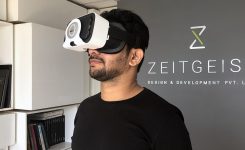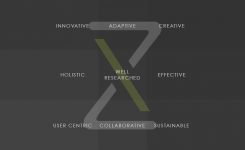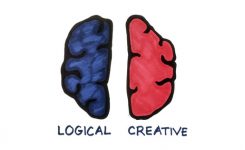Design Strategy
Designing User-Centric Solutions: The IDEO Way
July 6, 2018 - Design Strategy
In the article we published last week we talked about how and why Zeitgeist incorporates the Design Thinking framework while designing solutions.
But everything is always better explained and understood with an example and when it comes to Design Thinking, there is, of course, no better place to go for examples than IDEO.
To understand how IDEO develops truly ‘user-centric’ solutions, today we’ll highlight three examples of how the firm used insight, observation and empathy, which, according to Tim Brown are the “three mutually reinforcing elements of any successful design program”, to uncover latent needs of the end users they were developing solutions for.
According to Brown, the real challenge of design thinkers is “helping people to articulate the latent needs they may not even know they have.”

Insight – The Centers for Disease Control and Prevention case study
When The Center for Disease Control and Prevention approached IDEO to develop a solution to tackle the alarming obesity trend amongst the youth of America, IDEO went in search of context and insight into the user’s mind – to Jennifer Portnick.
By taking legal action against an aerobic and dance fitness company that had refused to let her become a franchisee instructor, Portnick had made headlines when the firm was forced to change a discriminatory policy of theirs that prevented plus sized individuals from becoming instructors.
Portnick was plus sized, and had argued that ‘fit’ and ‘large’ were not incompatible, claiming she worked out 6 times a week and was in fact, fit.
Jennifer Portnick’s story gave the team at IDEO invaluable insight that helped them reconsider several assumptions about overweight people.
‘To begin with the assumption that all fat people want to be thin, that weight is inversely proportional to happiness, or that large size implies lack of discipline is to prejudge the problem.’

Observation – The Acumen Fund case study
When IDEO worked with the Acumen Fund to find a way to provide clean water to the underprivileged in developing countries like India and Africa, observation helped them to understand problems that were not immediately obvious.
For example, they realised that obtaining safe, clean water wasn’t always the problem; rather the problem was often transporting it hygienically across harsh terrain and long distances to its final destination. Observation, via local NGOs, also brought about the need to develop solutions that were culturally appropriate, using systems and methods the end user would be comfortable with.

Empathy – The U.S. Department of Energy case study
One of the important parts of designing a user centric solution is to understand how the user views the problem. When IDEO worked with the U.S. Department of Energy (DoE) to promote energy efficiency, it was discovered, through extensive research conducted amongst consumers across cities in the US, that the consumers did not in fact care about energy efficiency and this was one of the assumptions the DoE’s prior programmes had been based upon.
By empathising with the end user’s perspective, IDEO was able to suggest solutions that were energy efficient no doubt, such as ‘stylish but thermally efficient window coverings and retail displays of energy-efficient lighting’, but more impactfully, that also tied in to what really mattered to the target market – comfort, style and community.
These examples bring out the fact that Design Thinking prevents solving ‘problems’ that are based on the wrong assumptions; for then one isn’t actually solving a meaningful problem!
These are also real life examples of the potential Design Thinking has to bring about solutions for positive social impact – solutions that can solve the pressing problems our world faces today.
If you are intrigued by the Design Thinking framework and would like to apply it to your business, get in touch with Zeitgeist today.
Note: All examples and quotes from ‘Change by Design’ by Tim Brown, Harper Collins, 2009













